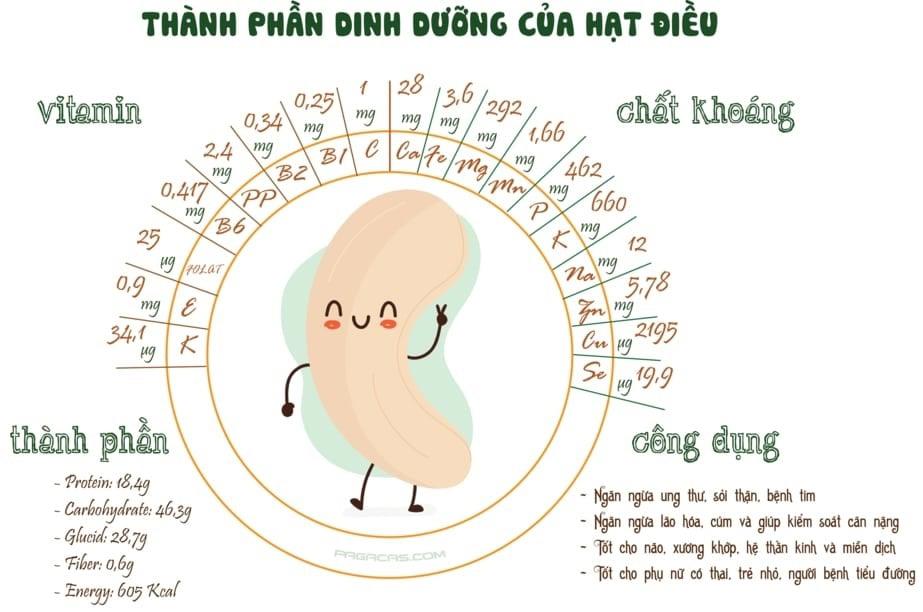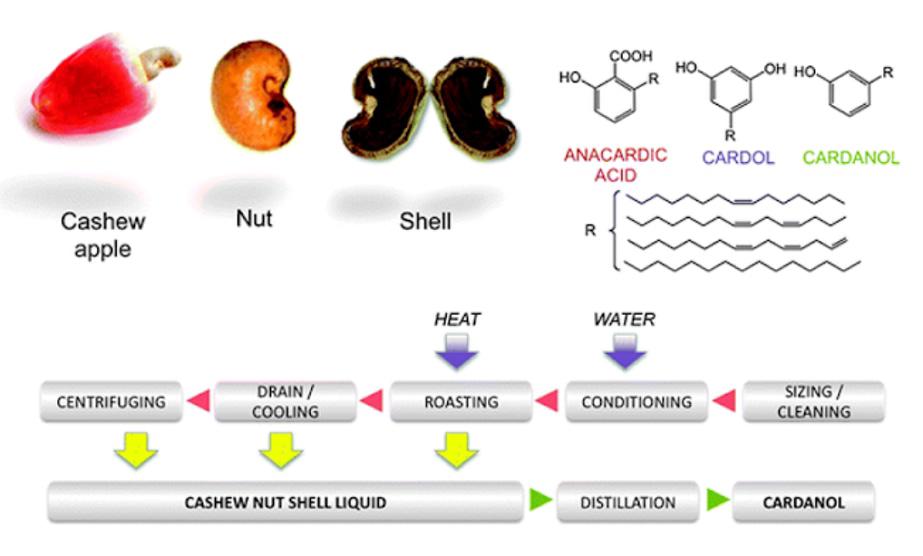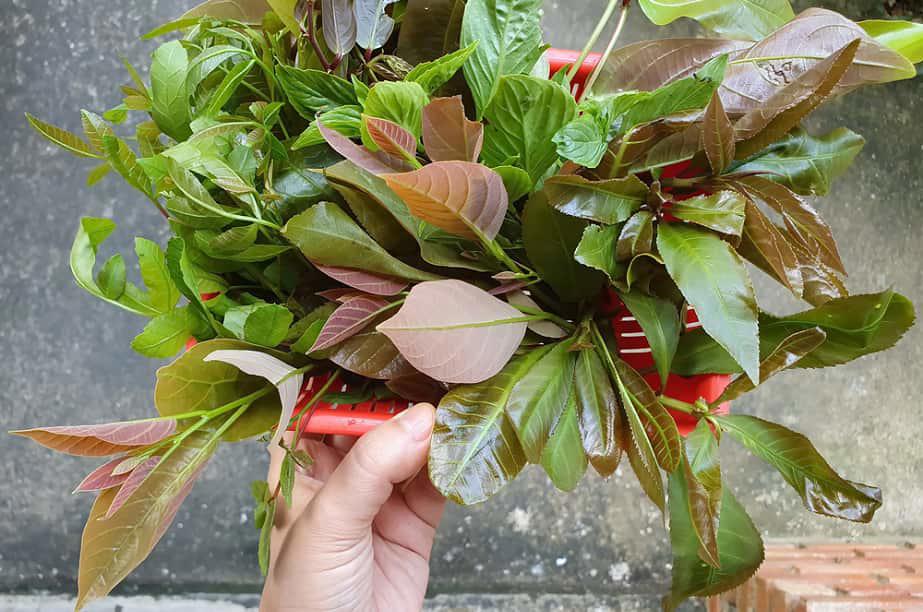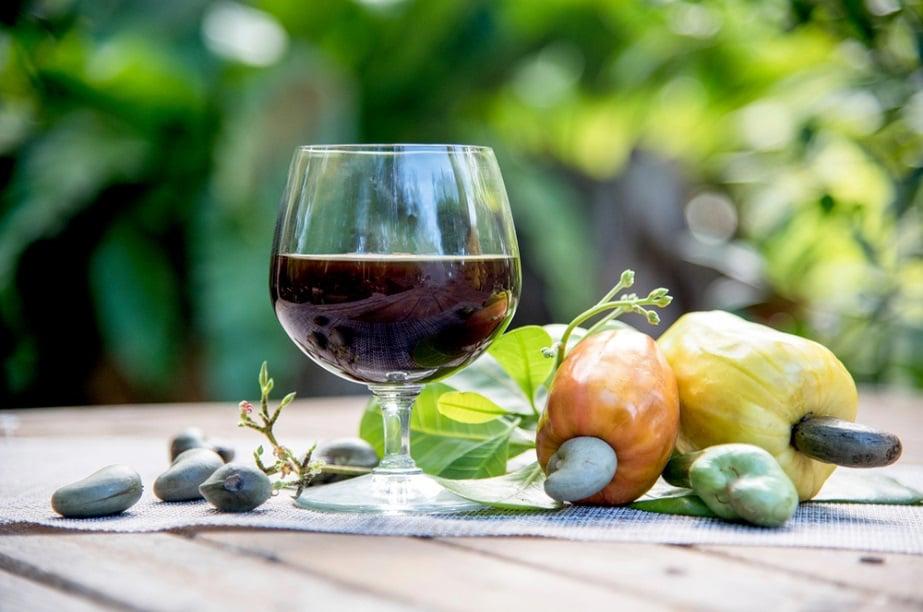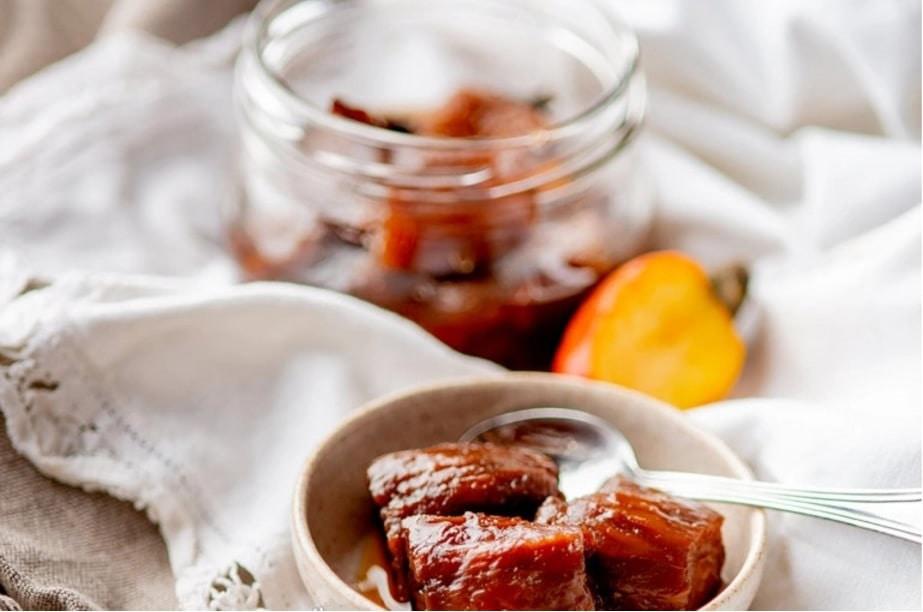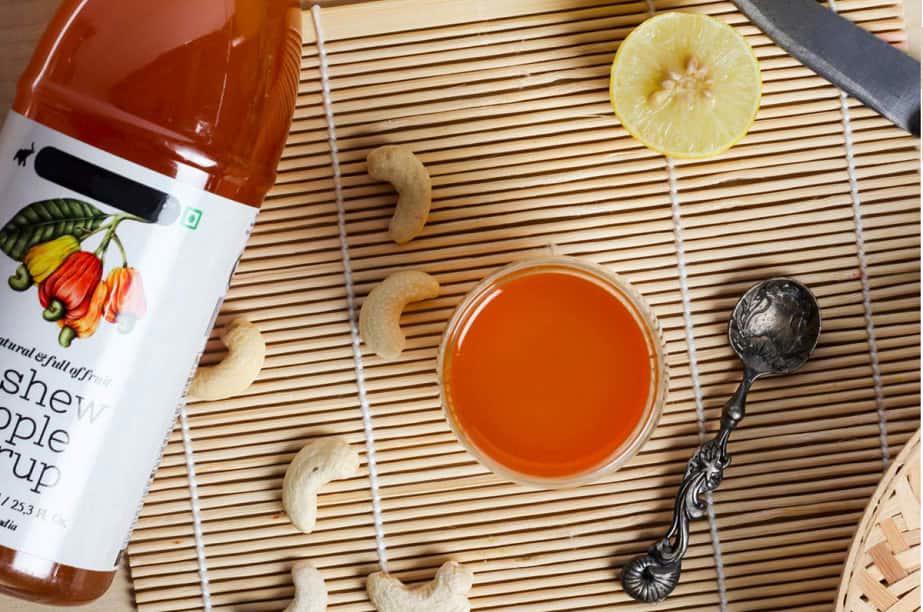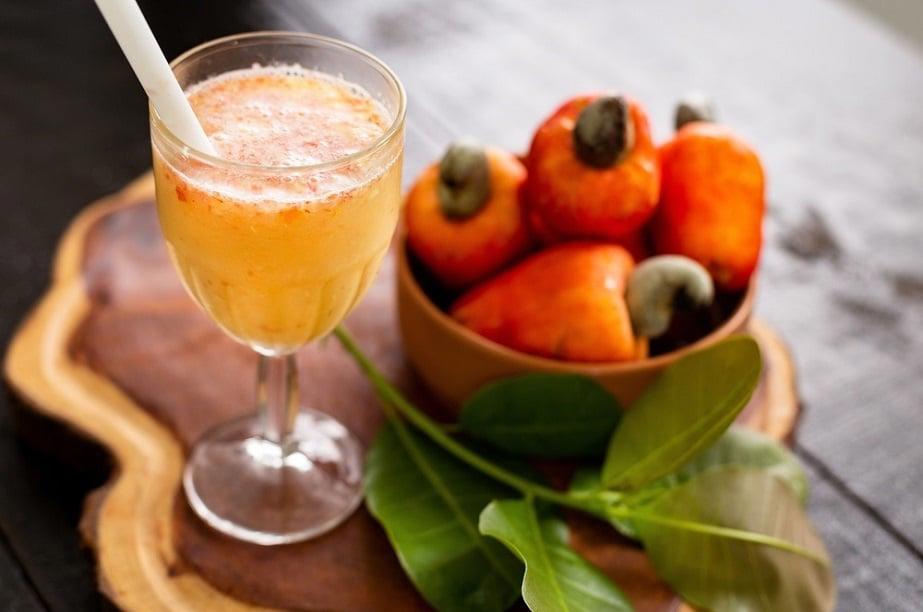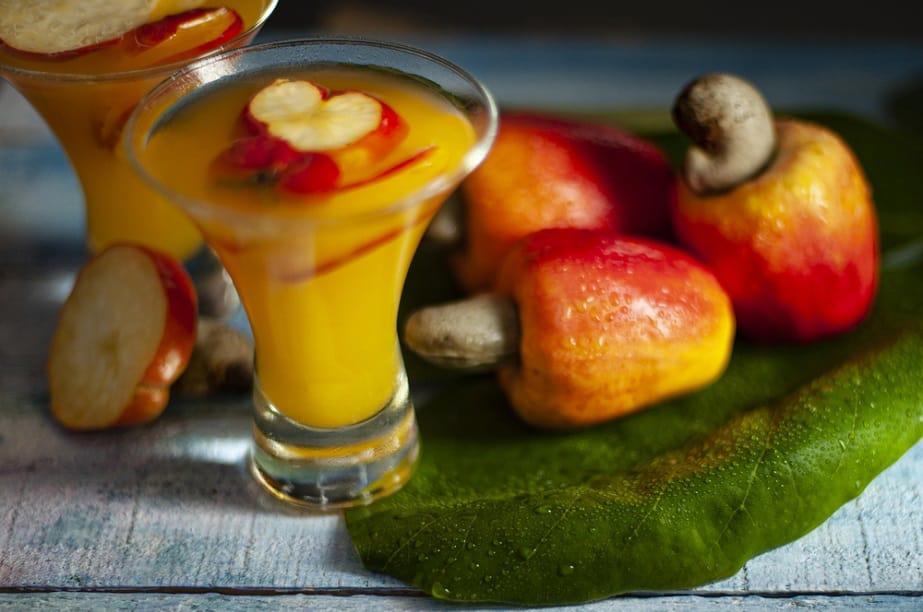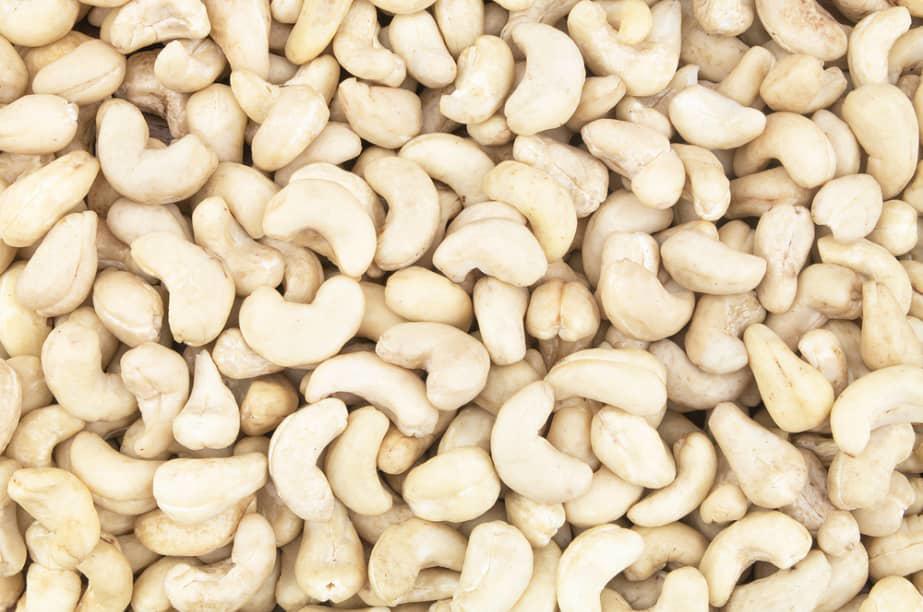In Vietnam, there are a lot of supplies of cashew leaves. However, the applications of cashew leaves have not been exploited and left a lot of potential. So what are the characteristics and applications of cashew leaves?
Features
Cashew leaves are leaves of the cashew tree. They are oval in shape with fine pronounced veins and midribs. Each leaf is 10 to 20 centimeters long, by 7 to 12 centimeters in width. Cashew leaves are best eaten when they are young and are a purplish green at the tips, and brighter green at the bottom. When young, the leaves have a texture like hard spinach. They have a tangy, astringent taste.
Cashew leaves are botanically classified as Anacardium occidentale. They may be referred to as Kasoy leaves, Pucuk Gajus and Daun Gajus.
Seasons
Cashew leaves are available year-round.
Cashew leaves appear in all areas where the cashew tree is present, so it is present throughout the Americas, Africa, Australia and Asia.
In Vietnam, the cashew growing area is distributed from the central part to the southern tip of Vietnam, the Ca Mau province.
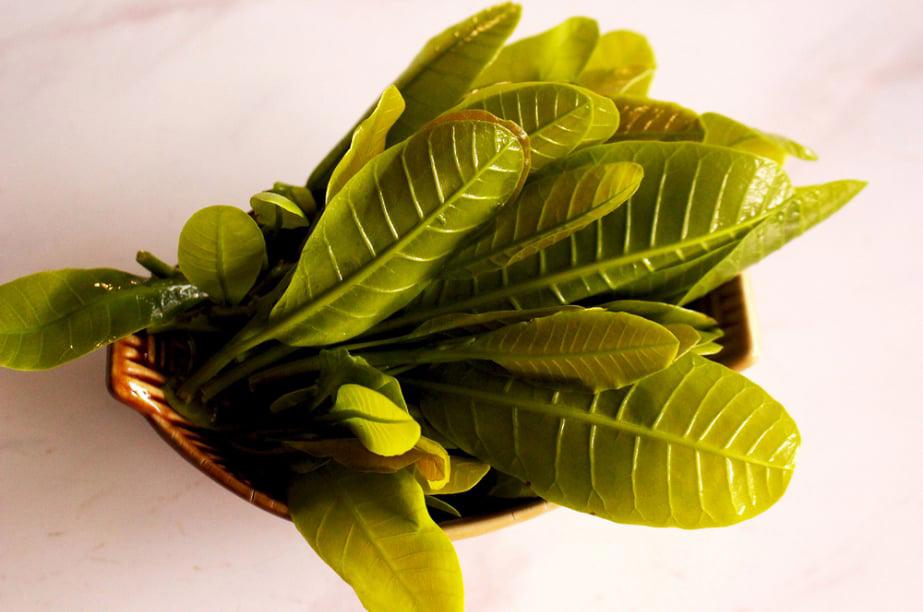
Nutritional Value
Research has shown that cashew leaves are rich in antioxidants and have antifungal, antiparasitic, antibacterial, antiseptic, and anti-inflammatory properties. They contain vitamin B and vitamin C. They are a fair source of iron and calcium, and also contain zinc, magnesium, phosphorus, maganese, sodium and potassium.
Applications
Applications of cashew leaves in the world
Cashew leaves are an uncommon grocery item. They are usually found in small quantities in the markets of Malaysia and the Philippines. The leaves and young shoots are used in salads and as a medicinal herb.
Young cashew leaves can be eaten fresh out of hand, like lettuce leaves. They are commonly included among the leaves in "ulam" salads in Malaysia. They may be dipped in a spicy sauce and eaten as a snack, or may be used as a garnish for fish and sambal dishes. Their astringent taste helps to bring coolness to spicy dishes. To store Cashew leaves, put them in a bag in the refrigerator, where they will last for several days.
Cashew leaves are used medicinally in several cultures. In many places, they are used as an antiseptic. In Peru and India, they are chewed and used as toothpaste, and are further used to treat toothaches and gum problems. They may be pulped to make mouthwashes. In Africa, they are used to treat diabetes and malaria. In Java, the older leaves are turned into a paste and used to treat burns and skin conditions.
Application of cashew leaves in Vietnam
In Vietnam, cashew leaves are not currently considered commercial products. Some studies on the application of cashew leaves in making medicine and tea are shown. They are mainly used by Southern people in meals.
Using as food:
Cashew leaves have a fleshy aroma, slightly acrid taste like avocado leaves and fig leaves, and have good nutrients for the body. So it has long been used as food. Southerners often use young cashew leaves as raw vegetables or use them in typical Southern dishes (shrimp leaves, rat meat, snake meat dishes).
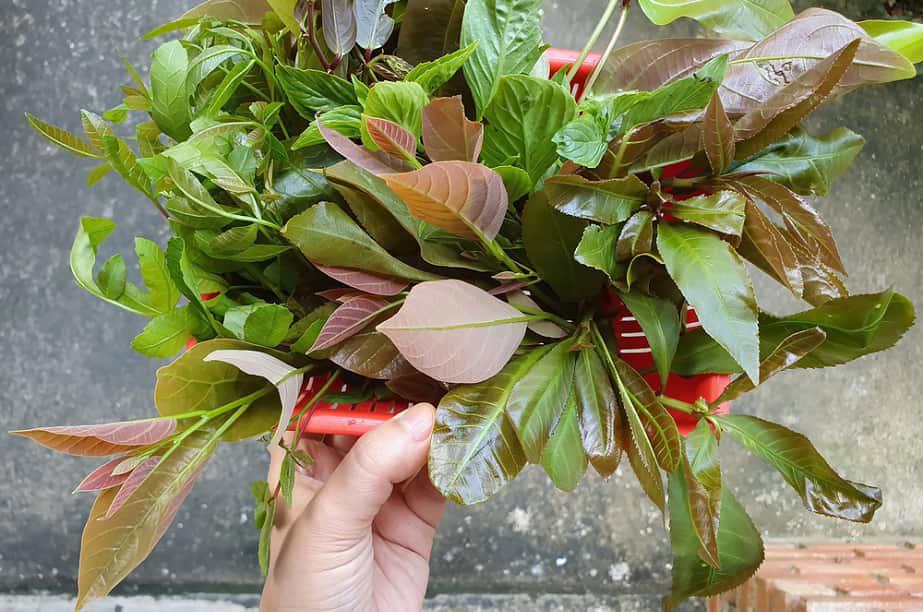
Picture - Cashew leaves are used as a type of raw vegetable
Using cashew leaves to make medicine:
Cashew leaves contain a significant amount of carbohydrates, flavonoids, saponins, alkaloids and especially contain high levels of tannins, which have diuretic, antibacterial, antioxidant effects and support in controlling the sugar level in the blood. The results of Sokeng’s study showed that cashew leaves have a very positive effect on lowering blood sugar. In addition, they also help to decrease intestinal absorption of glucose and increase insulin sensitivity, thereby improving tissue and actively supporting in preventing hyperglycemia. Also, some components of cashew nuts help to prevent and limit diabetes complications.
Using cashew leaves as fertilizer:
In addition to the above applications, cashew leaves are now used by cashew growers to compost on the spot when the leaves fall to take advantage of additional nutrients for the tree.
References
Available at: https://specialtyproduce.com/produce/Cashew_Leaves_16959.php
Thanh, P. D (2003). Cashew nuts - production and processing.





